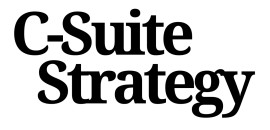
Understanding the strategic role of capex sourcing
The Evolving Landscape of Capital Expenditure Sourcing
Capital expenditure (capex) sourcing is no longer just about acquiring assets or negotiating the lowest price. In today’s business environment, organizations are under pressure to align capex procurement with broader strategic objectives. This shift is driven by the need to optimize costs, improve efficiency, and ensure regulatory compliance, all while supporting long term growth and resilience.
Procurement teams are increasingly expected to act as strategic partners in the business, not just transactional facilitators. The distinction between capex and opex procurement is blurring, as both play critical roles in supporting operational and financial goals. Capex sourcing decisions now require a holistic view—balancing immediate project requirements with the long term value of capital investments.
- Strategic alignment: Capex sourcing must reflect the organization’s vision, ensuring that capital expenditures support business priorities and industry trends.
- Supplier relationships: Building strong supplier partnerships is essential for managing risks, ensuring compliance, and driving cost reduction across the procurement process.
- Data-driven decision making: Leveraging digital procurement tools and analytics enables procurement teams to identify best practices, benchmark costs, and improve efficiency in capex investments.
As businesses face increasing complexity in regulatory compliance and operational requirements, the role of capex sourcing becomes even more critical. Organizations that treat capex procurement as a strategic lever—rather than a routine expenditure procurement activity—position themselves to achieve sustainable competitive advantage. For more on how advanced financial reporting can support strategic decision making in capex sourcing, explore enhancing strategic decision making with advanced financial reporting.
Aligning capex sourcing with organizational goals
Translating Business Objectives into Capex Sourcing Criteria
Capital expenditure (capex) sourcing is not just about acquiring assets or negotiating costs. For organizations seeking a strategic edge, the process must be tightly aligned with broader business goals. This means procurement teams and business leaders need to work together to ensure that every capex investment supports the company’s long-term vision, operational requirements, and financial targets. A strategic approach to capex procurement involves:- Defining clear business requirements for each project or investment, considering both current and future operational needs
- Ensuring that capital expenditures are prioritized based on their potential to drive sustainable value and competitive advantage
- Integrating compliance and regulatory considerations early in the procurement process to avoid costly delays or risks
- Balancing capex and opex procurement to optimize total cost of ownership and improve efficiency
Building cross-functional collaboration in capex sourcing
Unlocking Value Through Cross-Functional Synergy
In many organizations, capital expenditure (capex) sourcing is often siloed within procurement teams or finance. However, the most successful businesses recognize that cross-functional collaboration is essential to unlock strategic value from capex investments. When procurement, finance, operations, compliance, and project management teams work together, the result is a more holistic approach to capital expenditure sourcing. Why does this matter? Capex projects are complex, long term, and often involve significant financial and operational risks. By bringing together diverse expertise, organizations can:- Ensure alignment between business requirements and procurement process
- Improve efficiency in decision making and project execution
- Enhance regulatory compliance and risk management
- Drive cost reduction and optimize total cost of ownership
- Establish clear roles and responsibilities for each function involved in capex sourcing
- Implement regular cross-departmental reviews of capex investments and supplier performance
- Encourage open communication and knowledge sharing between procurement, finance, and operational teams
- Leverage digital procurement solutions to centralize information and track progress
Risk management in capex sourcing decisions
Mitigating Uncertainty in Capex Procurement
Managing risk in capital expenditure (capex) sourcing is not just about avoiding pitfalls—it is about building resilience and ensuring that investments deliver sustainable value. For businesses, the stakes are high. Capex procurement decisions often involve significant financial commitments, long-term assets, and complex supplier relationships. A robust risk management approach is essential for protecting both operational and strategic interests.
- Regulatory compliance: Organizations must navigate a landscape of industry regulations and compliance requirements. Failing to meet these standards can result in costly delays or penalties. Embedding compliance checks into the procurement process helps mitigate these risks early.
- Supplier risk: The reliability and financial health of suppliers directly impact project timelines and costs. Procurement teams should conduct thorough due diligence, assessing supplier stability and contingency planning for potential disruptions.
- Market volatility: Fluctuations in material costs, exchange rates, or geopolitical factors can affect capex investments. Leveraging data and analytics enables more agile decision making, allowing businesses to anticipate and respond to changes in the market environment.
- Operational risks: Integrating cross-functional expertise ensures that technical, financial, and operational risks are identified and addressed. This collaboration improves efficiency and reduces the likelihood of unforeseen issues during project execution.
Balancing Capex and Opex for Long-Term Value
Risk management in capex sourcing is closely tied to the balance between capital expenditures (capex) and operational expenditures (opex). Strategic decision makers must evaluate not only the upfront costs but also the long-term operational impact. For example, choosing higher-quality equipment may increase initial expenditure but reduce opex through improved reliability and lower maintenance costs. This holistic view supports cost reduction and maximizes the value of investments over the asset’s term.
Embedding Best Practices in the Procurement Team
Effective risk management requires embedding best practices within the procurement team. This includes regular risk assessments, scenario planning, and continuous monitoring of both internal and external factors. Digital procurement tools can enhance visibility, streamline the procurement capex process, and support compliance tracking. By fostering a culture of proactive risk management, organizations can safeguard their capital investments and drive strategic advantage in a competitive industry landscape.
Leveraging data and analytics for smarter capex sourcing
Unlocking Value with Data-Driven Capex Procurement
Capital expenditure (capex) sourcing is evolving rapidly, and organizations that leverage data and analytics are gaining a clear strategic edge. The days of relying solely on historical spend or gut instinct are over. Today, procurement teams can tap into advanced analytics to drive smarter, more informed decisions across the capex procurement process. Modern businesses face complex requirements when it comes to capital investments. Whether evaluating long term assets or balancing capex and opex, data-driven insights help procurement teams optimize supplier selection, negotiate better terms, and ensure regulatory compliance. This approach not only reduces costs but also improves efficiency and supports sustainable value creation.- Enhanced decision making: By integrating financial, operational, and market data, procurement teams can assess the true total cost of ownership for capital expenditures. This enables more accurate forecasting and risk assessment for each project.
- Supplier performance monitoring: Analytics tools allow organizations to track supplier reliability, quality, and compliance over time. This supports strategic sourcing decisions and strengthens supplier relationships.
- Cost reduction and value optimization: Data-driven capex sourcing uncovers hidden savings opportunities by identifying inefficiencies and benchmarking against industry best practices.
- Regulatory and compliance assurance: Automated analytics can flag potential compliance risks early in the procurement process, reducing exposure to costly penalties and delays.
Driving sustainable value through capex sourcing
Embedding Sustainability into Capital Expenditure Decisions
For organizations aiming to secure a strategic edge, integrating sustainability into capex sourcing is no longer optional. The shift from short-term cost reduction to long-term value creation is transforming how procurement teams approach capital expenditure. Businesses are now expected to balance financial performance with environmental and social responsibility, making sustainable capex investments a core part of their strategy.Key Levers for Sustainable Value Creation
- Supplier Engagement: Selecting suppliers who demonstrate strong sustainability credentials can help organizations meet regulatory compliance requirements and industry standards. This approach not only reduces operational risks but also enhances brand reputation over the long term.
- Lifecycle Cost Analysis: Moving beyond initial purchase price, procurement teams are evaluating total cost of ownership for term assets. Factoring in maintenance, energy consumption, and end-of-life disposal ensures capital expenditures deliver value throughout their lifecycle.
- Digital Procurement Tools: Leveraging digital procurement platforms enables better tracking of sustainability metrics and improves efficiency in the procurement process. These tools help identify opportunities for both capex and opex procurement to align with sustainability goals.
- Cross-Functional Collaboration: Sustainable capex sourcing requires close cooperation between finance, operations, and procurement. By aligning capital expenditure decisions with broader business objectives, organizations can drive both financial and non-financial value.














